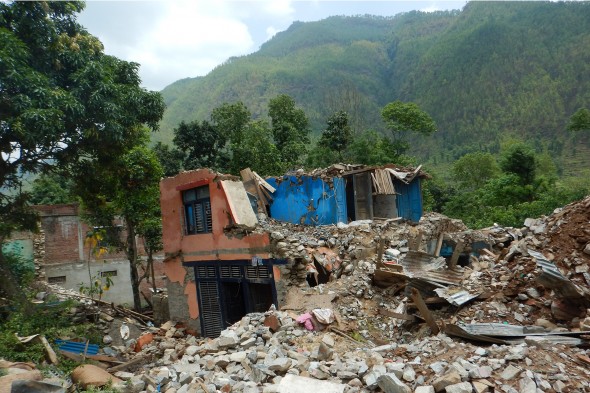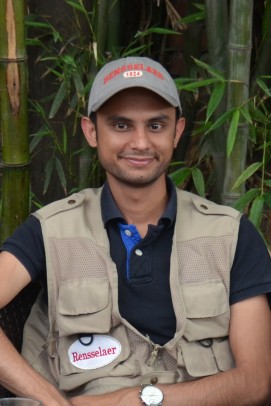Disaster response research is personal for UIC engineering student

“It was like a bad dream,” says UIC engineering graduate student Nabin Kafle of the return to his home in Kathmandu, Nepal, after the April 25 earthquake. Photo: Nabin Kafle
When UIC student Nabin Kafle returned to his hometown of Kathmandu, Nepal, in May he found heartbreak, but he also found inspiration.
He was relieved to be reunited with his family, who survived the 7.8 magnitude earthquake that struck Nepal April 25 and killed about 8,800 people and injured more than 21,000.
“The scene I witnessed was tear-jerking,” said Kafle, a doctoral student in civil engineering. “All the childhood memories of the monuments, buildings, environment were shattered to dust. It was like a bad dream.”
Kafle spent 35 days in Nepal, helping family members rebuild their homes and lives. At the same time, he took a step back and analyzed the disaster as a scientist.

In Nepal, Kafle partnered with Rensselaer Polytechnic Institute researchers on a disaster response project funded by the National Science Foundation.
Through his adviser, engineering faculty member Bo Zou, Kafle connected with researchers at Rensselaer Polytechnic Institute in New York to partner on a project funded by the National Science Foundation. Two Rensselaer researchers traveled with Kafle to Nepal to conduct a post-disaster humanitarian logistics study.
Their initial findings show that disaster response is complex because of the breakdown in communication systems and the traditional supply chain for goods.
“People responsible for supplying the goods in disaster sites stop doing their activity due to fear of entering the disaster site or because they are the victims,” Kafle said. “Very few disaster responders said they had prior experience in responding to a disaster. There’s a lot of confusion among responders.”
It’s critical for residents to become part of the disaster response effort, he said. A local volunteer group began disaster response work in Nepal within a day of the earthquake and dispatched more than 70 trucks filled with supplies in the first two days.
“International humanitarian organizations rushed in and had a hard time collecting information on the affected area and figuring out ways to move aid to the disaster site,” he said. “Without a local group of people, the disaster response wouldn’t function.”
Donations are critical but it’s important to ensure the donated items are useful, he said.
“A group of people responded that they received some good medicines as aid from foreign agencies but these medicines were of no use at the disaster site,” he said. “People should not treat the disaster site as a dumping site for their unwanted or unused goods.”
International aid groups must prepare for difficult terrain, Kafle added.
“Local topographical aspects and sociocultural aspects add another dimension to the complexity of disaster response,” he said. “Many parts of the country were inaccessible weeks after the disaster.”
Kafle and his collaborators plan to refine and publish their recommended protocol to help in future disaster relief.
“Every disaster is different from others,” he said. “We may have some preparations but we don’t know what type of disaster is going to happen or when.”
